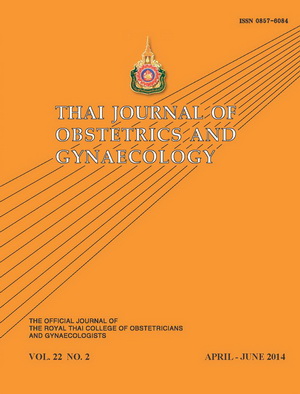Mammographic Density and Metabolic Syndrome in Climacteric Women
Main Article Content
Abstract
Objective: To evaluate whether metabolic syndrome is associated with an increase in percent mammographic density, which are breast cancer risk factors.
Materials and Methods: A cross-sectional analytical study. A total of 713 climacteric women of ages between 40 and 70 were eligible to participate in our study. We performed questionnaire, general physical examination, blood test and mammogram on all participants. The participants were then classified into two groups, with and without metabolic syndrome, according to AHA/NHLBI 2005 statement. Radiologists read and categorized mammographic density by using a traditional 4-level BI-RADS density scale. We used logistic regression and mixed model statistical analysis to examine the associations of metabolic syndrome and components of metabolic syndrome with the percent mammographic density.
Results: The prevalence of metabolic syndrome in our study was 20.48%. The most common ranges of mammographic density were 50% to74% for the women with and without metabolic syndrome, respectively. We found the inverse association between metabolic syndrome and percent mammographic density. In addition, after controlling for body mass index (BMI), the inverse associations were also demonstrated between percent mammographic density and raised triglyceride.
Conclusion: Our results show that there is no association between the metabolic syndrome with an increase percent mammographic density among climacteric woman.


